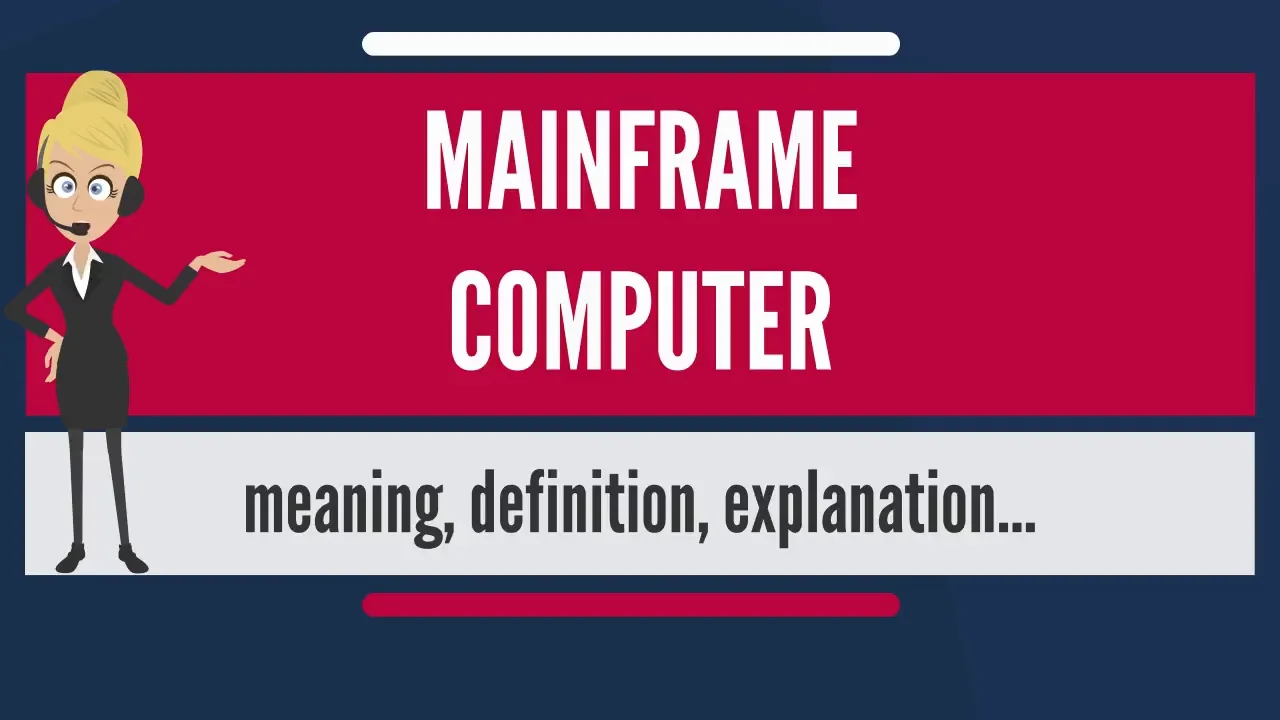**✪✪✪✪✪
http://www.theaudiopedia.com ✪✪✪✪✪**
What does MAINFRAME COMPUTER mean? MAINFRAME COMPUTER meaning - MAINFRAME COMPUTER definition - MAINFRAME COMPUTER explanation. What is the meaning of MAINFRAME COMPUTER? What is the definition of MAINFRAME COMPUTER? What does MAINFRAME COMPUTER stand for? What is MAINFRAME COMPUTER meaning? What is MAINFRAME COMPUTER definition?
Source: Wikipedia.org article, adapted under
https://creativecommons.org/licenses/by-sa/3.0/ license.
Mainframe computers (colloquially referred to as "big iron") are computers used primarily by large organizations for critical applications; bulk data processing, such as census, industry and consumer statistics, enterprise resource planning; and transaction processing. They are larger and have more processing power than some other classes of computers: minicomputers, servers, workstations, and personal computers.
The term originally referred to the large cabinets called "main frames" that housed the central processing unit and main memory of early computers. Later, the term was used to distinguish high-end commercial machines from less powerful units. Most large-scale computer system architectures were established in the 1960s, but continue to evolve. Mainframe computers are acting as servers.
Modern mainframes can run multiple different instances of operating systems at the same time. This technique of virtual machines allows applications to run as if they were on physically distinct computers. In this role, a single mainframe can replace higher-functioning hardware services available to conventional servers. While mainframes pioneered this capability, virtualization is now available on most families of computer systems, though not always to the same degree or level of sophistication.
Mainframes can add or hot swap system capacity without disrupting system function, with specificity and granularity to a level of sophistication not usually available with most server solutions. Modern mainframes, notably the IBM zSeries, System z9 and System z10 servers, offer two levels of virtualization: logical partitions (LPARs, via the PR/SM facility) and virtual machines (via the z/VM operating system). Many mainframe customers run two machines: one in their primary data center, and one in their backup data center—fully active, partially active, or on standby—in case there is a catastrophe affecting the first building. Test, development, training, and production workload for applications and databases can run on a single machine, except for extremely large demands where the capacity of one machine might be limiting. Such a two-mainframe installation can support continuous business service, avoiding both planned and unplanned outages. In practice many customers use multiple mainframes linked either by Parallel Sysplex and shared DASD (in IBM's case), or with shared, geographically dispersed storage provided by EMC or Hitachi.
Mainframes are designed to handle very high volume input and output (I/O) and emphasize throughput computing. Since the late-1950s, mainframe designs have included subsidiary hardware (called channels or peripheral processors) which manage the I/O devices, leaving the CPU free to deal only with high-speed memory. It is common in mainframe shops to deal with massive databases and files. Gigabyte to terabyte-size record files are not unusual. Compared to a typical PC, mainframes commonly have hundreds to thousands of times as much data storage online, and can access it reasonably quickly. Other server families also offload I/O processing and emphasize throughput computing.
Mainframe return on investment (ROI), like any other computing platform, is dependent on its ability to scale, support mixed workloads, reduce labor costs, deliver uninterrupted service for critical business applications, and several other risk-adjusted cost factors.....
